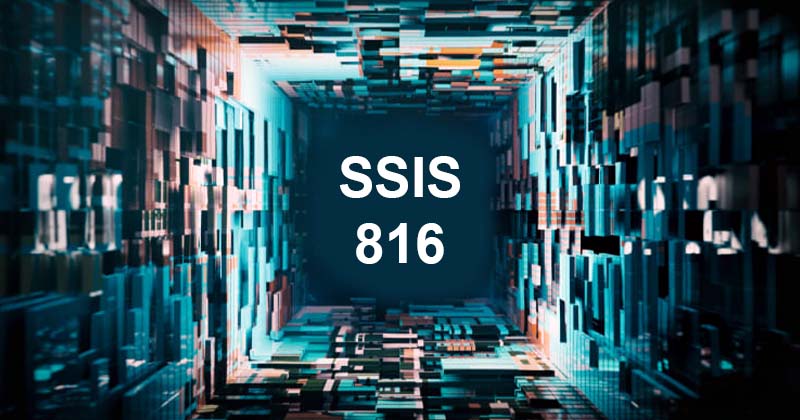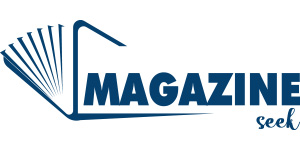Unlocking the Power of SSIS 816: A Comprehensive Guide for Data Integration

Introduction to SSIS 816
With the ever-increasing volume and complexity of data in today’s business landscape, organizations need robust solutions to integrate, transform, and analyze their data effectively. This is where SSIS 816 comes into play. SSIS 816, short for SQL Server Integration Services 816, is a powerful data integration tool developed by Microsoft. In this comprehensive guide, we will explore the ins and outs of SSIS 816, its benefits, features, best practices, and more.
What is SSIS 816?
SSIS 816 is a feature-rich Extract, Transform, Load (ETL) tool that allows users to integrate data from various sources into a single destination. It is part of the Microsoft SQL Server suite and provides a visual development environment for creating, deploying, and managing data integration solutions. SSIS 816 supports a wide range of data sources including databases, flat files, XML, and more, making it a versatile tool for handling diverse data integration scenarios.
Benefits of using SSIS 816 for data integration
Implementing SSIS 816 for data integration offers numerous benefits to organizations. Firstly, it provides a scalable and high-performance solution, allowing for efficient processing of large volumes of data. SSIS 816 also offers robust error handling and logging capabilities, ensuring data integrity and traceability throughout the integration process. Additionally, SSIS 816 supports parallel processing, enabling faster execution of data integration tasks.
Another major advantage of SSIS 816 is its seamless integration with other Microsoft tools and technologies. Whether you are working with SQL Server, Azure, or third-party applications, SSIS 816 provides seamless connectivity and interoperability. This integration extends to the Microsoft Business Intelligence (BI) stack, enabling users to leverage the power of SSIS 816 alongside tools like SQL Server Analysis Services and Power BI for comprehensive data management and analytics.
Features of SSIS 816
SSIS 816 is packed with a wide range of features that empower users to build sophisticated data integration solutions. One of its notable features is the rich set of data transformation capabilities. With SSIS 816, you can easily perform tasks like data cleansing, aggregating, merging, and splitting, among others. The tool also offers robust data flow control, allowing users to define complex data flow paths and transformations using a visually intuitive interface.
Additionally, SSIS 816 provides extensive support for data quality management. It offers various data profiling and validation tools to ensure the accuracy, completeness, and consistency of your data. SSIS 816 also includes advanced error handling and event-driven workflow capabilities, enabling users to design robust and fault-tolerant integration processes. Moreover, SSIS 816 supports advanced scripting and custom component development, allowing for limitless extensibility and customization.
Getting started with SSIS 816
To get started with SSIS 816, you need to have a basic understanding of data integration concepts and Microsoft SQL Server. Familiarize yourself with the SSIS 816 interface, which consists of the Control Flow and Data Flow tabs. The Control Flow tab allows you to design the workflow and control the execution of tasks, while the Data Flow tab is where you define the data sources, transformations, and destinations.
When creating a new SSIS 816 project, it is recommended to follow a modular and reusable approach. Break down your data integration tasks into smaller components and encapsulate them into packages. This will make your solutions more manageable, maintainable, and scalable. SSIS 816 also allows you to parameterize your packages, enabling dynamic configuration and flexibility.
Understanding the SSIS 816 interface
The SSIS 816 interface is designed to provide a user-friendly and intuitive experience for building data integration solutions. The Control Flow tab allows you to design the workflow using tasks and containers. Tasks represent individual actions or operations, such as executing SQL statements or sending emails. Containers, on the other hand, provide a way to group and organize tasks.
The Data Flow tab is where the actual data integration happens. It consists of data sources, transformations, and destinations. Data sources represent the input data, which can be a database table, a flat file, or any other supported source. Transformations are the operations applied to the input data, such as sorting, filtering, or aggregating. Destinations are the final destinations for the transformed data, such as a database table or a flat file.
SSIS 816 data integration process
The data integration process in SSIS 816 typically involves the following steps:
- Source Configuration: Define the source of your data, whether it’s a database, a file, or any other supported source. Configure the necessary connection properties and parameters.
- Data Transformation: Apply the required transformations to the data. This can include cleaning, aggregating, merging, splitting, or any other transformation relevant to your data integration scenario.
- Destination Configuration: Specify the destination for the transformed data. This can be a database table, a file, or any other supported destination. Configure the necessary connection properties and parameters.
- Error Handling: Implement error handling mechanisms to ensure data integrity and traceability. SSIS 816 provides built-in components for handling errors and logging information.
- Execution and Monitoring: Execute the data integration process and monitor its progress. SSIS 816 provides various options for executing packages, including scheduled execution and event-driven execution.
Best practices for using SSIS 816
To make the most out of SSIS 816, it is important to follow some best practices:
- Modular Design: Break down your data integration tasks into smaller, reusable components. This will make your solutions more maintainable and scalable.
- Error Handling: Implement proper error handling mechanisms to ensure data integrity. Use built-in components like the Error Output and Event Handlers to catch and handle errors effectively.
- Logging and Monitoring: Enable logging and integrate SSIS 816 with a robust monitoring solution. This will help you track the execution of your packages and troubleshoot any issues that may arise.
- Performance Optimization: Optimize your SSIS 816 packages for better performance. Use techniques like parallel processing, buffer tuning, and incremental loading to improve the overall execution speed.
- Version Control: Implement a version control system to manage your SSIS 816 projects and packages. This will help you track changes, collaborate with team members, and roll back to previous versions if needed.
Troubleshooting common issues in SSIS 816
While SSIS 816 is a powerful tool, it’s not immune to issues and errors. Here are some common issues you may encounter while working with SSIS 816 and their possible solutions:
- Connection Issues: Ensure that your connection managers are configured correctly and have the necessary permissions to access the data sources and destinations.
- Data Type Mismatches: Pay attention to data types when mapping columns between sources and destinations. Ensure that the data types are compatible and handle any necessary conversions.
- Package Validation Errors: Verify that all components and configurations in your SSIS 816 packages are valid. Check for missing or incorrect settings that may cause validation errors.
- Performance Bottlenecks: Identify and address any performance bottlenecks in your SSIS 816 packages. Use performance monitoring tools and techniques to optimize your data integration processes.
- Deployment and Execution Issues: Double-check the deployment settings and configurations of your SSIS 816 packages. Ensure that the necessary dependencies and permissions are in place for successful execution.
SSIS 816 vs other data integration tools
When it comes to data integration, there are several tools available in the market. So, why choose SSIS 816? Here are some differentiating factors that set SSIS 816 apart from other data integration tools:
- Seamless Integration: SSIS 816 seamlessly integrates with other Microsoft tools and technologies, making it an ideal choice for organizations already using the Microsoft stack.
- Robust Ecosystem: SSIS 816 is part of the Microsoft SQL Server suite, which offers a comprehensive ecosystem of tools and technologies for data management and analytics.
- Visual Development Environment: SSIS 816 provides a visual development environment that simplifies the design and development of data integration solutions. This makes it accessible to both technical and non-technical users.
- Scalability and Performance: SSIS 816 is designed for scalability and high-performance data integration. It can handle large volumes of data efficiently and supports parallel processing for faster execution.
- Extensibility: SSIS 816 allows for custom scripting and component development, providing limitless extensibility options. This enables users to tailor the tool to their specific needs and requirements.
Case studies: Successful implementations of SSIS 816
To showcase the real-world impact of SSIS 816, let’s look at some case studies of successful implementations:
- Company XYZ: Company XYZ, a multinational retail organization, implemented SSIS 816 to consolidate their sales data from various stores and analyze it centrally. With SSIS 816, they were able to automate the data integration process, reducing manual effort and improving data accuracy. This allowed them to make data-driven decisions and optimize their supply chain.
- Healthcare Provider ABC: Healthcare Provider ABC used SSIS 816 to streamline their patient data integration across multiple systems. By integrating data from electronic health records, billing systems, and other sources, they were able to create a comprehensive patient profile. This facilitated better patient care coordination and improved operational efficiency.
- Financial Institution DEF: Financial Institution DEF leveraged SSIS 816 to automate their data reconciliation process. By integrating data from various banking systems, they were able to identify discrepancies and anomalies more efficiently. This not only saved time but also improved compliance and reduced operational risks.
Training and resources for learning SSIS 816
If you’re looking to learn SSIS 816, there are several training and resources available:
- Microsoft Documentation: Microsoft provides comprehensive documentation for SSIS 816, including tutorials, guides, and reference materials. This is a great starting point to familiarize yourself with the tool and its capabilities.
- Online Courses: Various online platforms offer SSIS 816 courses, ranging from beginner to advanced levels. These courses provide in-depth training on SSIS 816 concepts, best practices, and hands-on exercises.
- Community Forums: Joining SSIS 816 community forums and discussion groups can provide valuable insights and help you troubleshoot any issues. The SSIS 816 community is vibrant and enthusiastic, making it a great place to connect with fellow users.
- Books and eBooks: There are several books and eBooks available that delve into SSIS 816 in detail. These resources cover topics like design patterns, performance optimization, and advanced techniques.
- Microsoft Virtual Academy: Microsoft Virtual Academy offers free online training courses on various Microsoft technologies, including SSIS 816. These courses provide video tutorials, demos, and quizzes to enhance your learning experience.
FAQ
Q: Is SSIS 816 only available with SQL Server?
A: Yes, SSIS 816 is a part of the Microsoft SQL Server suite and is tightly integrated with SQL Server. However, you can use SSIS 816 to integrate data from various sources, including non-SQL Server databases and files.
Q: Can SSIS 816 handle real-time data integration?
A: SSIS 816 is primarily designed for batch processing, but it can also handle near real-time data integration scenarios. You can use techniques like Change Data Capture (CDC) and event-driven execution to achieve near real-time integration.
Q: Can SSIS 816 be used for cloud-based data integration?
A: Yes, SSIS 816 provides built-in connectivity to various cloud platforms, including Microsoft Azure. You can use SSIS 816 to integrate data from on-premises systems with cloud-based services seamlessly.
Q: Is SSIS 816 suitable for small businesses?
A: Yes, SSIS 816 is suitable for businesses of all sizes. It provides a scalable and cost-effective solution for data integration, whether you have a small data volume or a large enterprise-scale requirement.
Q: Can I schedule SSIS 816 packages for automated execution?
A: Yes, SSIS 816 allows you to schedule packages for automated execution using SQL Server Agent or other scheduling tools. This enables you to run your data integration processes at predefined intervals.
Conclusion
SSIS 816 is a powerful tool for data integration that empowers organizations to unlock the full potential of their data. Whether you are working with large volumes of data, diverse data sources, or complex data integration scenarios, SSIS 816 provides the flexibility, scalability, and performance required to meet your needs. By following best practices, leveraging its rich feature set, and learning from successful implementations, you can harness the power of SSIS 816 to streamline your data integration processes and drive better business outcomes.
Now is the time to embrace SSIS 816 and embark on a data integration journey that will transform the way you handle and leverage your data. Start exploring SSIS 816 today and see how it can revolutionize your data integration efforts.




